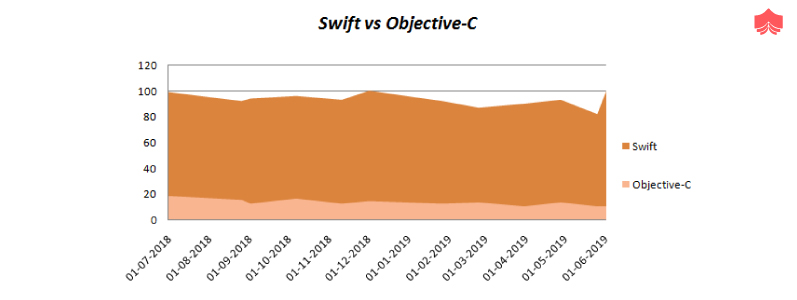Differences Between Swift and Objective C
Today, apps have become a crucial part of the marketing industries and mobile app development companies are now developing more apps according to customers’ requirements to gain profit. While developing the apps, the companies need to make sure that the app is pleasant, loads fast, execute even more fast, and valuable for its consumers.
Programming languages live longer, but it is the market getting outdated with the use of same programming language to develop an app. If you are developing apps and not yet explored Swift, an iOS programming language then you should make a note that Swift is the language of this era which not only supercede Objective-C (the other iOS programming language) also a better option to replace embedded programming on Apple platforms. But, how these two programming languages differ from each other? Let’s take a look at the differences between Swift and Objective-C iOS programming languages.
There are many factors to consider every time before choosing any programming language before app development. It leads to confusion among the app developers which leaves a space for the discussion on which language to choose- Swift or Objective-C for building iOS application?
Have a look at the analysis of facts given by Google trends that will solve all your doubts on choosing between the Swift or Objective-C programming languages:

Let’s take a closer look at the comparison of Swift vs Objective-C:
In Swift programming language, a switch can be executed to all new features such as ranges, tuples, values, lists of values, wildcards, as well as lines, classes, and structures. It doesn’t ‘fall through’ by default.
Objective-C code is less readable and more complicated. In addition to this, it is mandatory to develop a separate new structure for some Point variable. On the other side, Swift simplifies this process.
Swift has a more simplified syntax for creating fields and properties of the classes. Also, properties in Swift do not require instance variables. On the other end, in the latest versions of Objective-C, instance variables were created automatically and they could be set manually as well.
In Swift, instance variables cannot be created.
This is a very interesting feature for programmers. Xcode IDE is the latest editor where programmers can run the code. This code can be compiled and executed once at this editor. This lets the programmer code and see the results directly without building a complete project and running an emulator to check everything, saving your time. In Swift, you can easily experiment with new algorithms using a great interactive environment, which is not possible in Objective-C.
Enum is referred to as lines, characters, integers, and fractional numbers in Swift programming language. Therefore, using Swift, you get a more readable and less complex code implementing the inverse transformation #toRaw which is not possible with Objective-C.
In Swift, there are higher-order functions, functions as values, nested functions, closures, anonymous functions and other attributes of real functional programming. On the contrary, in Objective-C, you have to use blocks instead of functions. That’s why the code in Objective-C is 4 times lengthy and not as clear as in Swift.
While comparing Swift with Objective-C, it should always be noted that Swift is improved on a continual basis and this is a reason that the developers around the world are learning this new language. The most crucial reason for learning this language is that an average programmer also can develop simple mobile applications with Swift.
But, how will you decide which language to learn- either Swift or Objective-C? Let’s take a look around the tabular form of comparison between Swift and Objective-C languages based on the factors:
Swift is finally declared as ABI stable and is considered as a mature language. Also, from now on the future updates in Swift will not break the current code in Swift 5. On the other hand, Apple provides good interoperability between these two languages- Swift and Objective-C.
If you are building a binary framework, you can use Swift language to get Module Framework Stability and if you want to develop any C++ and Objective-C++ framework, at that moment you can blend the two languages- Swift and Objective-C.
Switch is easy
User-Friendly
Easy Code Compilation
Better enum
Functional Programming features
Research & References of Differences Between Swift and Objective C|A&C Accounting And Tax Services
Source
0 Comments